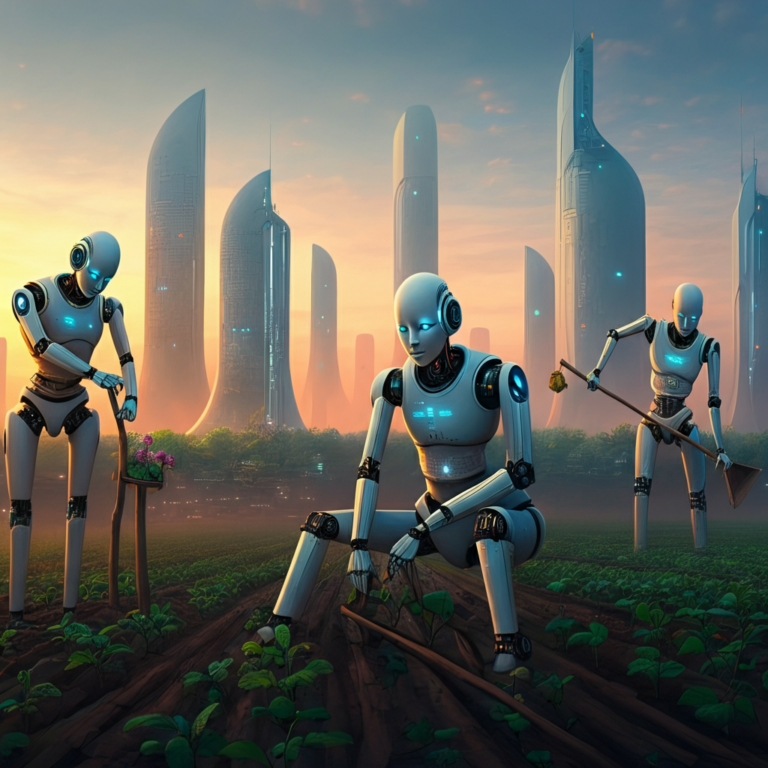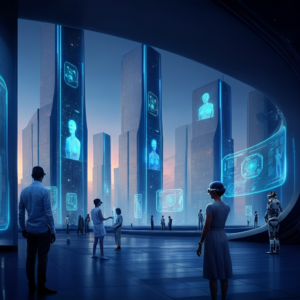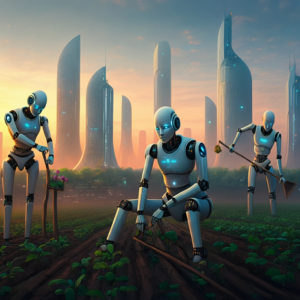It’s a question that has intrigued tech enthusiasts, future of work thinkers, and policymakers alike – what happens if robots take over manual labor jobs entirely? With the rapid evolution of automation and artificial intelligence (AI), this idea is no longer confined to science fiction. Instead, it’s becoming an increasingly relevant topic that could redefine our society, economy, and sense of purpose.
From factories to warehouses, AI and robotics are already automating time-intensive, repetitive tasks. But what happens to millions of workers whose livelihoods depend on these jobs? How can businesses, governments, and individuals prepare for this radical shift? And, perhaps most importantly, what role will human creativity and innovation play in this tech-driven future?
This blog explores these poignant questions and invites you to join the conversation about a world where manual labor jobs are no longer performed by humans. Together, we’ll examine the opportunities, challenges, and responsibilities that lie ahead.
The Rise of Automation and AI
What Are Automation and AI?
Automation refers to the use of technology to perform tasks without human intervention. This can be as simple as a conveyor belt in a factory or as complex as self-driving cars. AI, on the other hand, enables machines to mimic human intelligence, learning from data and making decisions autonomously.
Real-World Applications
Automation and AI have already permeated numerous industries:
- Manufacturing: Robotic arms assemble cars, electronics, and textiles with precision and speed.
- Logistics: Automated sorting systems and drones manage inventory and delivery in warehouses.
- Retail: Self-checkout machines reduce the need for cashiers.
- Healthcare: AI-powered robots assist in surgeries and manage repetitive administrative tasks.
These technologies are eliminating repetitive, manual tasks, freeing up human workers for more complex roles. However, this shift also threatens millions of manual labor jobs—a concern worth exploring.
The Potential Scenario: A World Without Manual Labor Jobs
Imagine This Future
Picture a world where robots handle all physical labor—from farming and construction to assembly lines and deliveries. Businesses benefit from round-the-clock efficiency, faster production, and reduced human error.
For individuals, this could mean less physical strain and more opportunities to focus on creative, intellectual, and interpersonal pursuits. But it’s not all sunny skies. A world without manual labor jobs would come with significant challenges.
Benefits
- Efficiency & Productivity: Robots would streamline operations, leading to faster production cycles.
- Cost Reduction: Businesses save on labor costs and workplace safety expenses.
- Equity in Resource Distribution: Automation could help ensure access to goods and services, especially in resource-scarce regions.
Challenges
- Job Displacement: Millions of workers in manual labor industries would face unemployment.
- Economic Inequality: Without proper redistribution mechanisms, the wealth gap could deepen.
- Loss of Purpose: Many individuals derive a sense of identity and contribution from their work. Without jobs, this could erode.
Repercussions on Society and the Economy
Social Impacts
The removal of manual labor jobs would massively impact societal structures. Families that rely on blue-collar income might face financial insecurity, affecting their quality of life. Communities built around industries such as manufacturing or agriculture could disintegrate as jobs vanish.
Economic Implications
Job displacement on a massive scale could lead to decreased consumer spending, stalling economic growth. Governments might need to implement universal basic income (UBI) programs to offset widespread unemployment and stabilize markets. Meanwhile, businesses would need to reconsider their entire approach to talent and workforce development.
The Role of Technology and Policy
Responsibility of Technology Creators
Tech companies developing automation tools and AI systems must act ethically, ensuring that their innovations are inclusive and beneficial to society. Transparency in how AI is built and deployed will foster trust and accountability.
Policy to the Rescue
Policymakers play a critical role in managing this transition. Potential strategies include:
- Upskilling Programs: Funding for education and training programs to help workers adapt to new, tech-driven roles.
- AI Taxes: Taxing automation technologies to fund public welfare programs like UBI.
- Anti-Monopoly Regulations: Ensuring that wealth generated by automation is distributed fairly.
Reimagining Work and Education
A New Era of Work
The traditional notion of work will evolve. Roles requiring creativity, emotional intelligence, and problem-solving are likely to thrive. Employment could shift towards artistic pursuits, caregiving, innovation, and entrepreneurship.
Lifelong Learning
Education systems will need to adapt to prepare individuals for an AI-dominated world. Lifelong learning programs, focusing on critical thinking, technology, and interpersonal skills, will be key to fostering a resilient workforce.
The Human Element
While robots excel in efficiency, humans possess unique traits that machines can’t replicate—creativity, empathy, and adaptability. These human qualities will remain invaluable, complementing machine-driven work.
Instead of being rendered obsolete, humans can thrive in domains where their emotional and intellectual abilities shine. For example, nurturing relationships, leading teams, and innovating solutions to complex problems will always require a human touch.
Building the Future Together
A world where robots replace all manual labor jobs might seem daunting, but it also holds extraordinary potential. By proactively addressing the challenges, investing in education, and implementing fair policies, society can thrive in this new paradigm. The future of work is not about competing with machines; it’s about complementing them.
Now, it’s your turn to shape the future. Share your thoughts in the comments below—what would YOU do in a world without manual labor jobs? Join the conversation and help envision a tomorrow where technology and humanity coexist harmoniously.







